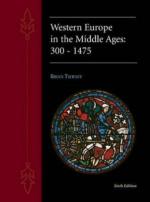|
This section contains 2,751 words (approx. 10 pages at 300 words per page) |

|
Clarification. Most historians interpret the fall of the Roman Empire in 476 as the date for the beginning of the formation of the Middle Ages, and they see the discovery of America in 1492 as the end of the Middle Ages. Although the time frame for this book begins in 814, historically, this date would involve the omission of the early Middle Ages, the age of the barbarian kingdoms and the formation of the Carolingian Empire. Moreover, it is commonly accepted that the following three institutions survived the fall of Rome, and they are fundamental for an understanding of the beginning of the Middle Ages: the Eastern Roman Empire at Constantinople; the Christian Church at Rome with its bishop as the successor of St. Peter; and the continuity of Roman law. Roman law continued in the East, where under the Emperor Justinian was completed the Codification of Roman law, the Corpus...
|
This section contains 2,751 words (approx. 10 pages at 300 words per page) |

|



